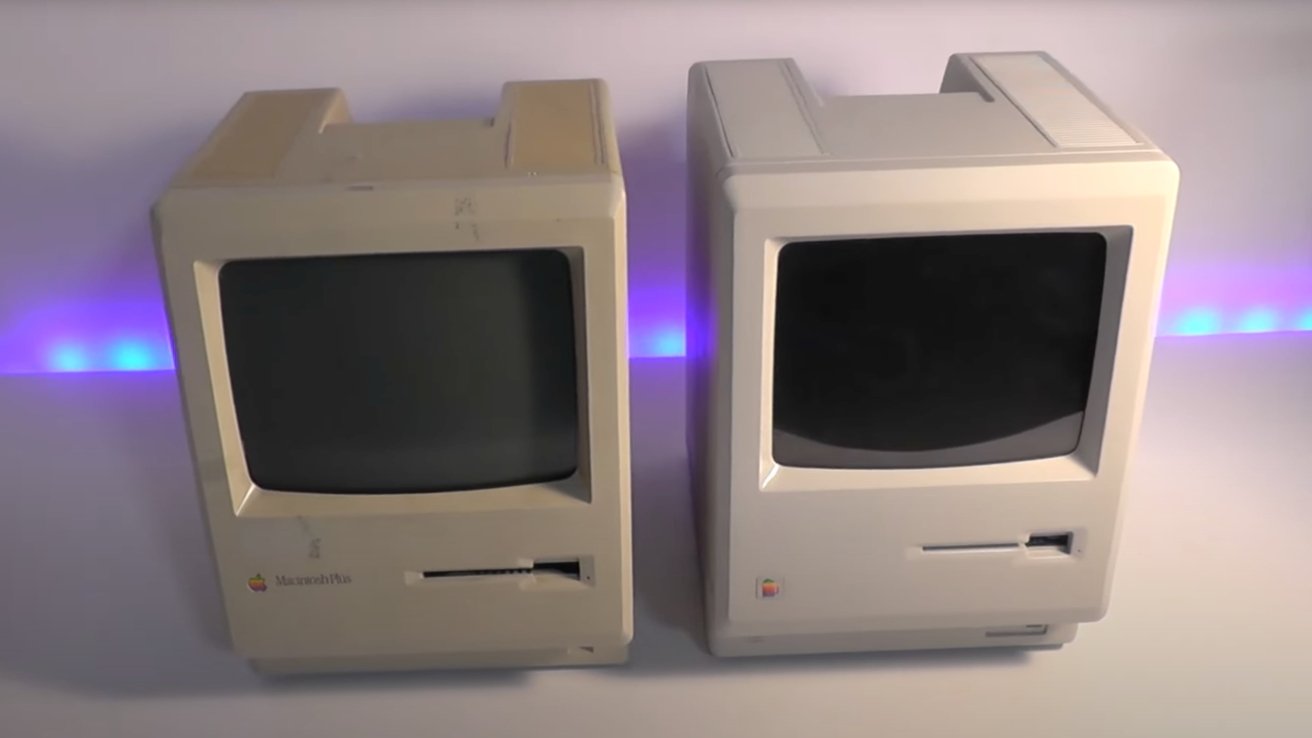Epic Hackintosh project gets 3D printed Mac Plus body
One Apple enthusiast has managed to create a Hackintosh closely modeled on the Macintosh Plus, thanks to a considerable amount of 3D printing.
Some Hackintosh projects attempt to give users the chance to try out earlier iterations of Apple's Mac operating system, without running on the original hardware. While users could seek out the older Macs in question, there's no guarantee that they will be fully functional, or at least in some form of usable state.
It's possible for enthusiasts to fix broken Apple hardware to have that experience, but sometimes efforts go down completely different routes. For example, one effort to modernize a vintage iMac G4 by adding M1 hardware from a Mac mini.
In one project by designer Kevin Noki published to YouTube on Monday, a Hackintosh was created that painstakingly recreated the original Macintosh hardware. The effort required an extensive amount of 3D modeling, 3D printing, and electronics.
Months previously, Noki had acquired a Macintosh Plus, one that wasn't working due to a failed power supply and was missing its floppy disk drive. Deemed a rare find in Germany, it was decided that gutting the Macintosh Plus of its hardware and replacing the internals with modern components like a Raspberry Pi would be a waste.
Instead, the YouTuber decided to wait to acquire a replacement floppy drive to properly fix the Macintosh down the road. In the meantime, with the hardware in front of them, it was decided that it was a good opportunity to make a full separate Hackintosh that emulated the appearance of the original.
Using the original as a guide for measurements, Noki recreated the dimensions of the enclosure using 3D printing in a months-long project. Printed in sections, assembled, coated with filler, and given an appropriate finish, the final enclosure looked very close to the original.
This also included a lot of detail work, including the texture of the casing, embossed symbols, and recreations of stickers and badges that adorned the original.
Classic outside, modern inside
Internally, Noki added a used HP thin client device acquired for 12 euro ($13) from eBay, as well as a disassembled 10-inch display from a supermarket cash register bought for 15 euros ($16), a power supply, and other necessary electrical items to the inside.
The thin client itself runs on Linux, but it also has the Mini vMac emulator that runs with customized source code.
A USB floppy drive was used for the project, converting it to an automatically ejecting version with an Arduino-controlled stepper motor.
While the ports of the thin client were accessible from the rear, a special effort was made when it came to peripherals. A homemade converter board allowed the original Macintosh Mouse and Apple ADB Keyboards to be attached without any further modification.
A battery cover at the back hides an SD card reader and more USB ports, used to expand the storage and to transfer files from another computer. Noki also recreated floppy disks for the project, including one with an image of MacPaint, as well as System 6, which boots from the floppy drive itself.
The end result is best described as a highly accurate full-scale recreation of Apple's own hardware, rebranded as the "Brewintosh."
While Noki has gone to the trouble of creating 3D files for printing the casing, it seems unlikely that they will be made public anytime soon. Noki says that a legal expert will have to be consulted before releasing them, due to the potential legal implications and the risk of Apple's lawyers going after the project.
 Malcolm Owen
Malcolm Owen
![The 3d-printed enclosure in sections [Youtube/Kevin Noki]](https://photos5.appleinsider.com/gallery/59028-120469-3dprintedhacintosh2-xl.jpg)
![The finished functional Macintosh Plus recreation [Youtube/Kevin Noki]](https://photos5.appleinsider.com/gallery/59028-120468-3dprintedhacintosh3-xl.jpg)











 Mike Wuerthele
Mike Wuerthele


 Chip Loder
Chip Loder

 William Gallagher
William Gallagher
 Christine McKee
Christine McKee
 Michael Stroup
Michael Stroup






